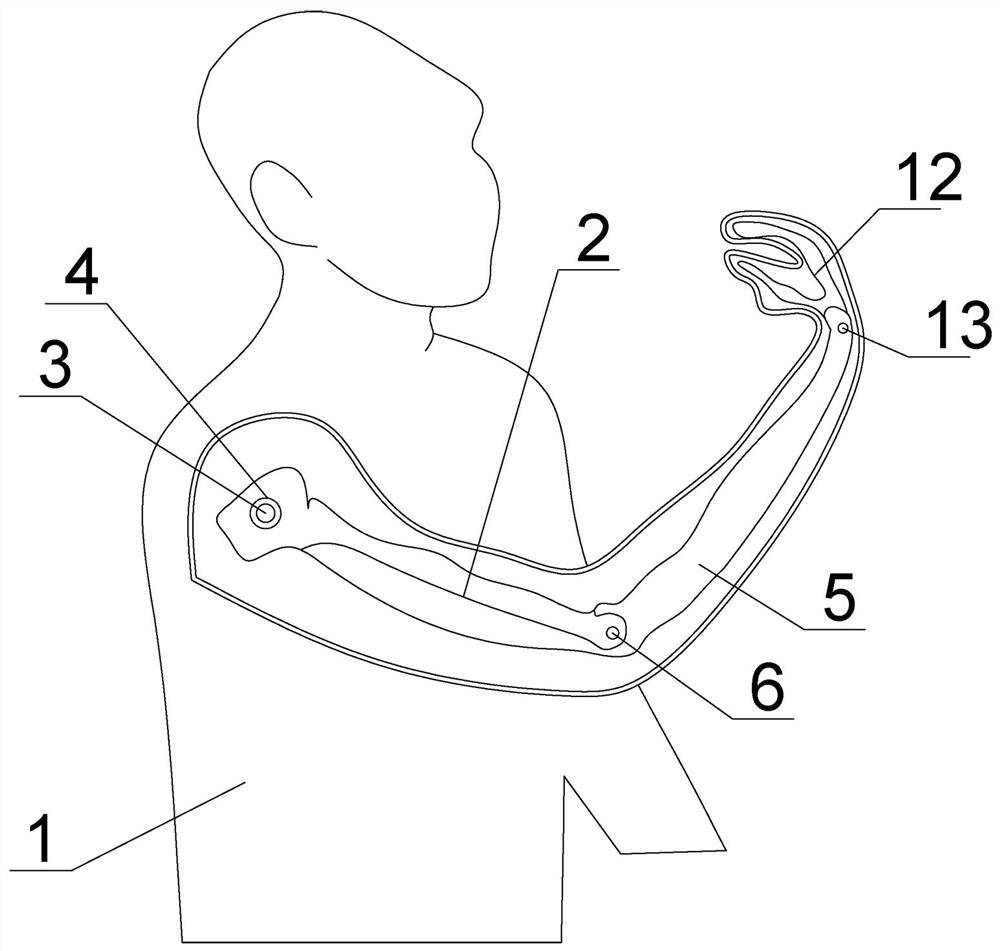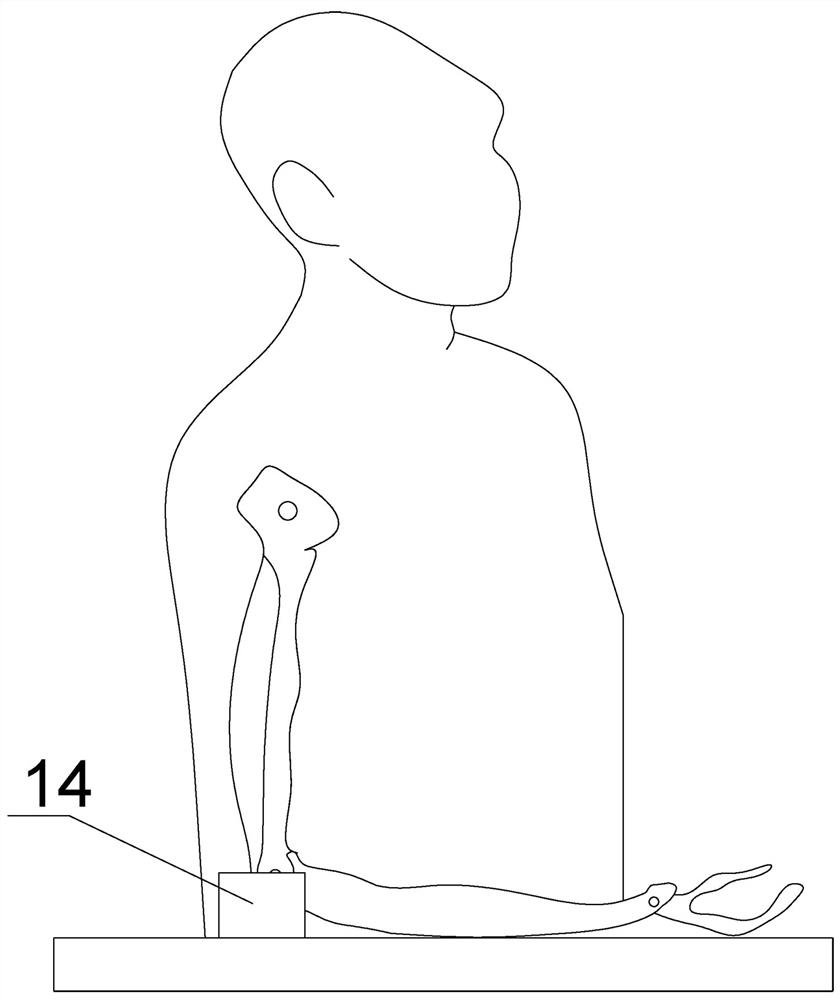Wrist-elbow-shoulder traditional Chinese medicine manipulation skill teaching instrument
A teaching instrument, a technology of traditional Chinese medicine, applied in the direction of instruments, educational appliances, teaching models, etc., can solve the problems of difficult standardized implementation, lack of quantitative structure of acupoint pressing intensity and arm posture, and achieve the effect of novel structure
- Summary
- Abstract
- Description
- Claims
- Application Information
AI Technical Summary
Problems solved by technology
Method used
Image
Examples
Embodiment 1
[0028] Embodiment 1: This embodiment aims to provide a wrist, elbow, and shoulder TCM manipulation skills teaching instrument, which is mainly used for the teaching of TCM manipulation skills. According to the existing TCM manipulation skill teaching aids, the acupoint pressing intensity and arm posture lack the necessary quantitative structure , making it difficult for students to carry out standardization in the process of daily training, simulation teaching and teaching practice scoring; based on this, this embodiment provides a TCM manipulation skill teaching device that can be applied throughout the entire TCM manipulation skill teaching process .
[0029] This embodiment focuses on explaining the massage indexes of various Chinese medicine manipulation skills at the arm; figure 1 A wrist, elbow and shoulder TCM skills teaching instrument shown in , includes a mannequin 1 and a teaching arm; the teaching arm includes a shoulder joint 2, an elbow joint 5, and a wrist joint...
Embodiment 2
[0039] Embodiment 2: This embodiment is basically the same as Embodiment 1, and the difference is that this embodiment further explains the manner of obtaining the angles between the joints.
[0040] In the present embodiment, shoulder angle displacement sensor 4 is used for collecting the angle displacement information of shoulder joint, and shoulder angle displacement sensor is initial state with shoulder joint vertical state; Elbow angle displacement sensor 11 is used for collecting the angle displacement information of elbow joint shoulder joint, And take the horizontal state of the elbow joint as the initial state; the wrist angle displacement sensor is used to collect the angular displacement information of the wrist joint and the elbow joint, and take the horizontal state of the wrist joint as the initial state.
[0041] like Figure 4 As shown in , in this embodiment, when detecting the angle of the arm, firstly, the shoulder joint is in the vertical state as the initi...
Embodiment 3
[0044] Embodiment 3: This embodiment is basically the same as Embodiment 1, and the difference is that this embodiment further explains the structure of the avatar.
[0045] In the daily teaching grading process, time is often used as one of the grading criteria for the exam. In order to further fix the structure of the teaching arm in this embodiment, the human platform 1 is fixed on the workbench, and the limit seat 14 is set on the workbench. A pressure touch switch is arranged in the limit seat 14, and the junction of the elbow joint and the shoulder joint is matched and fixed in the assembly seat, and the pressure touch switch can be triggered or released, and the pressure touch switch is connected with a timer.
[0046] In this embodiment, when the teaching arm is clamped in the limit seat, it is in the initial preparation state or the end of the test state. When the teaching arm breaks away from the limit seat, the timer starts counting, and the timing structure is uploa...
PUM
 Login to View More
Login to View More Abstract
Description
Claims
Application Information
 Login to View More
Login to View More - R&D
- Intellectual Property
- Life Sciences
- Materials
- Tech Scout
- Unparalleled Data Quality
- Higher Quality Content
- 60% Fewer Hallucinations
Browse by: Latest US Patents, China's latest patents, Technical Efficacy Thesaurus, Application Domain, Technology Topic, Popular Technical Reports.
© 2025 PatSnap. All rights reserved.Legal|Privacy policy|Modern Slavery Act Transparency Statement|Sitemap|About US| Contact US: help@patsnap.com



